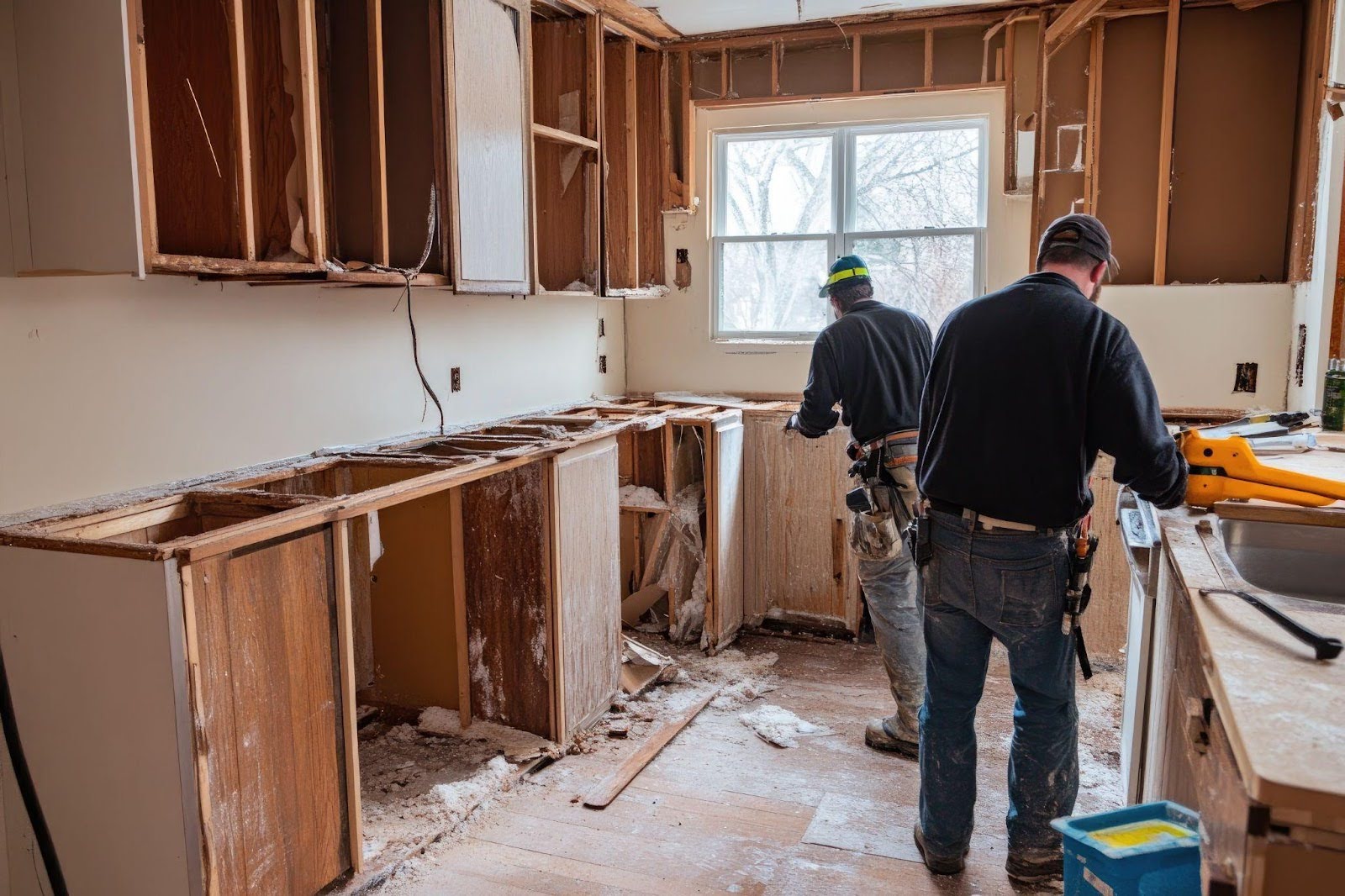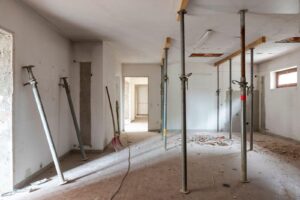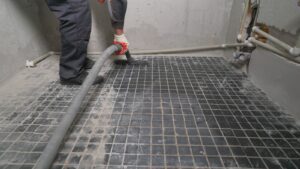Kitchen demolition marks the beginning of any successful renovation. This phase clears the path for new layouts, updated fixtures, and a transformed space — but it also demands careful planning. Ripping out cabinets or tearing into walls without a clear strategy leads to budget overruns, structural damage, and frustrating delays.
Many homeowners rush this step, eager to see progress. However, skipping key precautions often results in costly demolition mistakes that could derail the entire renovation. Whether you’re doing a full gut or a partial remodel, knowing what not to do is as important as having a solid plan in place.
This blog highlights the most common kitchen demolition mistakes and provides practical tips to help you avoid them. With the right approach, you’ll keep your project on track, protect your investment, and create a safe, smooth transition into the renovation phase.
Skipping the planning phase
Many homeowners feel tempted to start swinging hammers as soon as demolition day arrives. But starting without a plan invites chaos into your kitchen renovation. A clear, strategic plan serves as the backbone of a successful project. Without it, you risk running over budget, delaying your timeline, and damaging elements that should have stayed intact.
Define your project scope before touching anything. Decide whether you’re gutting the kitchen completely or removing targeted components like cabinets or flooring. Then, set a realistic budget that accounts for labor, materials, permits, and unforeseen costs. Build a timeline that aligns with contractor availability and material delivery schedules.
This upfront planning streamlines the demolition process and helps avoid costly surprises mid-project. When you prepare thoroughly, you confidently move forward, knowing your kitchen renovation stands on a solid foundation.
Not pulling the proper permits
Starting kitchen demolition without the right permits creates legal headaches and safety risks that derail even the most promising renovation. Local building codes exist to protect homeowners, contractors, and the structure itself. Skipping permits ignores those protections and exposes you to serious consequences.
Without proper documentation, you risk receiving stop-work orders, paying hefty fines, or needing to redo completed work to meet code. These setbacks delay your timeline, inflate your budget, and invite unnecessary stress into the kitchen renovation process. In worst-case scenarios, a lack of permits voids insurance coverage or complicates future home sales.
Check your local building authority’s website or speak directly with officials before demolition begins. Confirm whether your project requires structural, electrical, or plumbing permits, and gather all the necessary approvals in advance. Planning ahead keeps your renovation compliant, efficient, and free of costly legal surprises.
Overlooking structural and load-bearing elements
Ripping out walls without understanding their role puts your entire home at risk. Some walls do more than divide space — they hold up ceilings, support upper floors, and stabilize the structure. Removing a load-bearing element without a plan compromises safety, triggers expensive repairs, and threatens the integrity of your entire renovation.
Before you pick up a sledgehammer, bring in a structural engineer. This expert identifies which components support weight and which are safe to remove or modify. They assess beams, columns, and headers to ensure any changes won’t lead to sagging floors, cracked drywall, or a partial collapse down the line.
Taking the time to evaluate structural elements sets the stage for a safer, smoother renovation. Your remodel stays on track, your home remains secure, and you avoid the nightmare of rebuilding damage that never needed to happen.
Failing to disconnect utilities properly
Active utility lines pose serious risks during kitchen demolition. Leaving water, gas, or electrical systems connected exposes your home and crew to potential fires, flooding, electrocution, or explosions. These hazards cause injuries, damage property, and delay your renovation project.
Before tearing into any walls or fixtures, shut off all utility lines connected to the demolition zone. Turn off the main water supply, shut down gas valves, and flip the appropriate circuit breakers. Once disconnected, cap or secure the lines to prevent leaks, sparks, or backflow.
If you’re unfamiliar with utility systems, hire licensed professionals to handle this step. A plumber, electrician, or HVAC technician ensures a clean, safe disconnection and confirms the area is secure for demolition. Skipping this step creates unnecessary risks.
Following the proper shutdown process protects your investment and keeps your renovation moving forward without costly setbacks.
Using the wrong tools or equipment
Improvising with the wrong tools during kitchen demolition creates more problems than it solves. Inadequate or mismatched equipment often leads to accidental damage, slower progress, and unnecessary safety hazards.
Crowbars, hammers, and hand tools have their place, but they won’t match the speed or precision of professional-grade gear designed specifically for demolition tasks.
Using the proper tools streamlines the process and protects your home’s structure. For example, a floor scraper cuts removal time in half, while a reciprocating saw cleanly slices through old framing without splintering or cracking surrounding materials. Dust control systems, heavy-duty dumpsters, and jackhammers with vibration-reducing features all contribute to safer, faster demolition.
If you don’t own the necessary tools, rent them from a local equipment supplier or hire a professional demolition crew. Experts bring everything needed to get the job done right, and their experience helps prevent costly mistakes. Investing in the right equipment or professionals at the start keeps your renovation efficient, clean, and on schedule.
Ignoring safety precautions
Neglecting safety during kitchen demolition leads to preventable injuries and unnecessary setbacks. Many homeowners underestimate the risk of working without essential protective gear or fail to secure the work area. Flying debris, exposed nails, and unstable surfaces pose real dangers, especially in homes where children or pets live.
Proper safety precautions start with personal protective equipment. Wear heavy-duty gloves, safety goggles, steel-toe boots, and a dust mask or respirator when tearing down cabinets, breaking up tile, or removing drywall.
Ear protection becomes necessary when operating power tools or heavy machinery. Each of these items reduces the risk of injury and helps maintain focus during demanding tasks.
Equally important, establish a secure perimeter around the demolition zone. Block off access with caution tape or temporary barriers. Inform everyone in the household about the project’s timeline and danger zones. Never allow children or pets near active demolition areas.
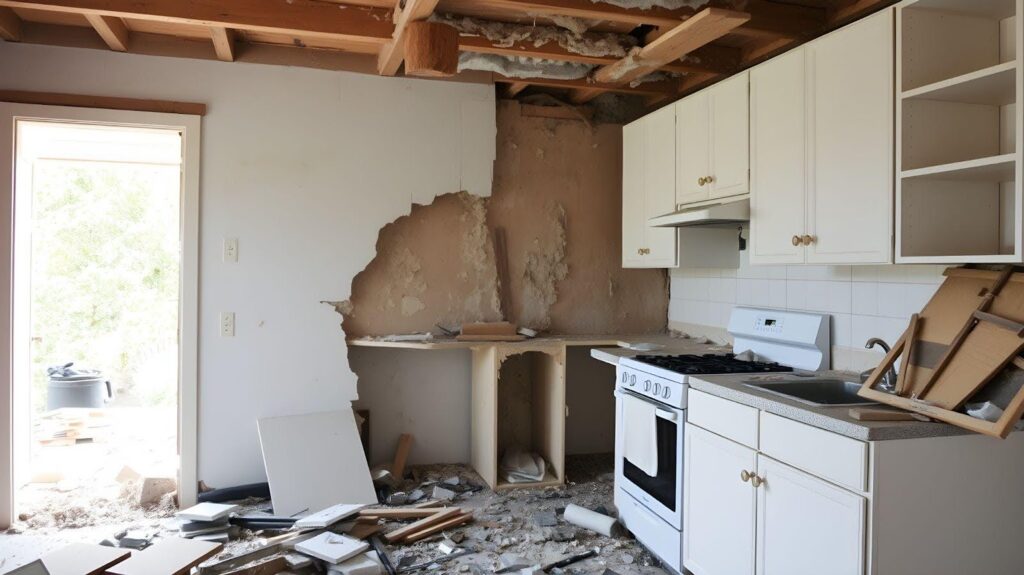
Underestimating debris removal
Kitchen demolition produces a surprising volume of debris. The material stacks up quickly, from broken cabinets and countertops to flooring, drywall, and insulation. What begins as a clean job site often turns chaotic if you fail to plan for proper disposal.
Ignoring cleanup logistics slows progress and creates safety hazards. Sharp edges, heavy chunks, and scattered dust make the area difficult to navigate and dangerous for anyone nearby. Letting debris pile up also delays other renovation phases like framing, electrical work, or flooring installation.
To avoid bottlenecks, schedule a cleanup strategy before demolition begins. Reserve a dumpster that fits your projected waste load and place it in a convenient spot. If your renovation takes place in a dense urban area or a property with limited access, arrange for professional hauling services with the equipment to handle tight spaces.
Some materials might require special disposal methods, especially if you uncover asbestos or lead paint. Professional removal teams know how to handle these hazards safely and legally, reducing your risk and ensuring compliance with environmental regulations.
When you prepare for debris removal in advance, you streamline the demolition, protect your crew, and keep your renovation moving forward without unnecessary interruptions.
Damaging reusable or salvageable materials
Demolition does not always mean destruction. In many kitchens, valuable materials hide in plain sight — solid wood cabinets, vintage hardware, intact appliances, and quality flooring offer second lives if handled carefully.
Rushing into demolition with sledgehammers and crowbars often leads to needless damage. Cabinets splinter, fixtures shatter, and hardwood gets gouged beyond repair. What could have saved money or supported a local donation center ends up in a landfill.
Before removing anything, assess which components still hold value. You might repurpose cabinets in a garage, donate a gently used sink to a nonprofit, or sell working appliances online. Even damaged pieces sometimes offer parts that prove useful in other projects.
Work slowly and methodically in areas where salvageable items exist. Use proper tools and techniques to remove pieces intact. Label and store components safely so they stay in usable condition throughout the renovation process.
Trying to DIY everything
Tackling a kitchen demolition project yourself might sound like a great way to save money. The idea of swinging a hammer and clearing space for a dream kitchen feels empowering — until something goes wrong.
Demolition involves more than knocking down walls and pulling up tile. You face hidden gas lines, electrical wiring, and potential structural elements behind every cabinet or appliance. One wrong move risks serious injury, costly repairs, or delays that throw your entire renovation off schedule.
Professionals bring more than muscle to the job. They understand permits, safety codes, material handling, and efficient techniques. Their experience helps prevent damage to parts of the home you intend to keep intact. They do it with precision and speed when they remove countertops, disconnect utilities, or haul debris.
Homeowners can safely take on light prep work like removing drawers or unscrewing hardware. But for anything involving structural elements, utilities, or heavy equipment, hire licensed contractors. Trusting the right team helps you avoid injuries, hidden damage, and expenses that often surpass the cost of professional help in the first place.
Let experts handle the demolition, so you can focus on designing and building the kitchen you’ve envisioned.
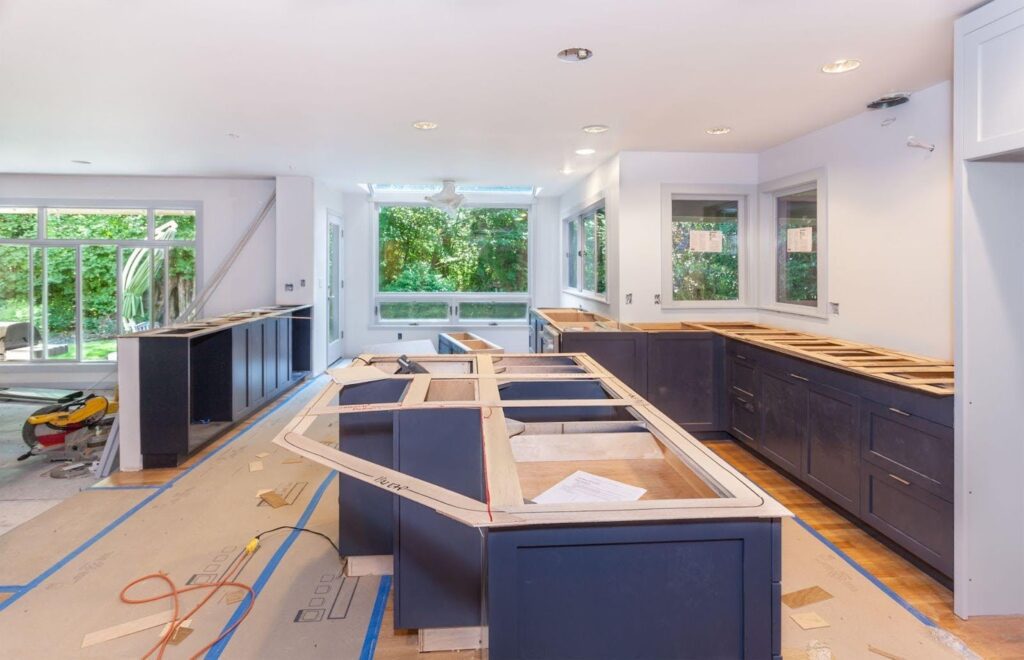
Make your renovation easier with Cutting Edge Demo
Cutting Edge Demo brings precision, professionalism, and peace of mind to every project. Our team understands the intricacies of kitchen demolition and follows a strategic process that protects your property while preparing it for transformation.
Whether you need selective removal or a full gut, we work quickly, safely, and cleanly to move your remodel forward without the headaches.
Contact Cutting Edge Demo when you want the job done right the first time. Let our experts clear the path so you can focus on designing the kitchen you’ve always wanted.

